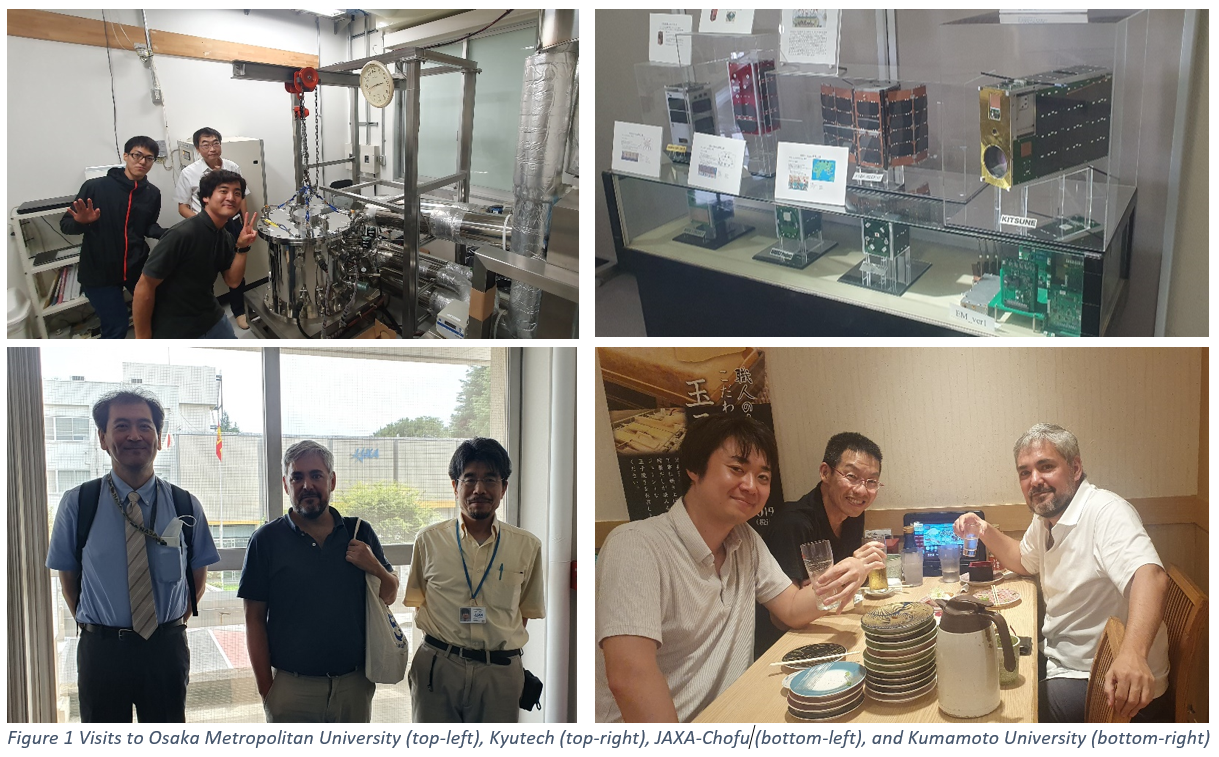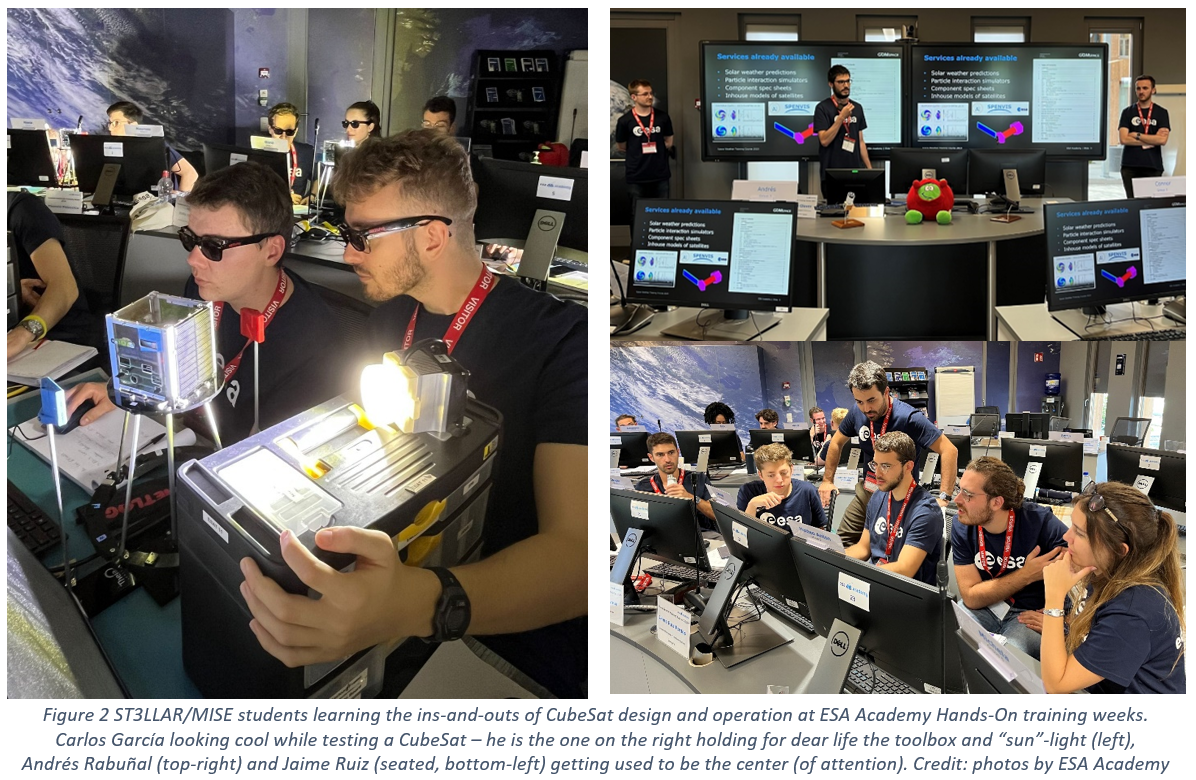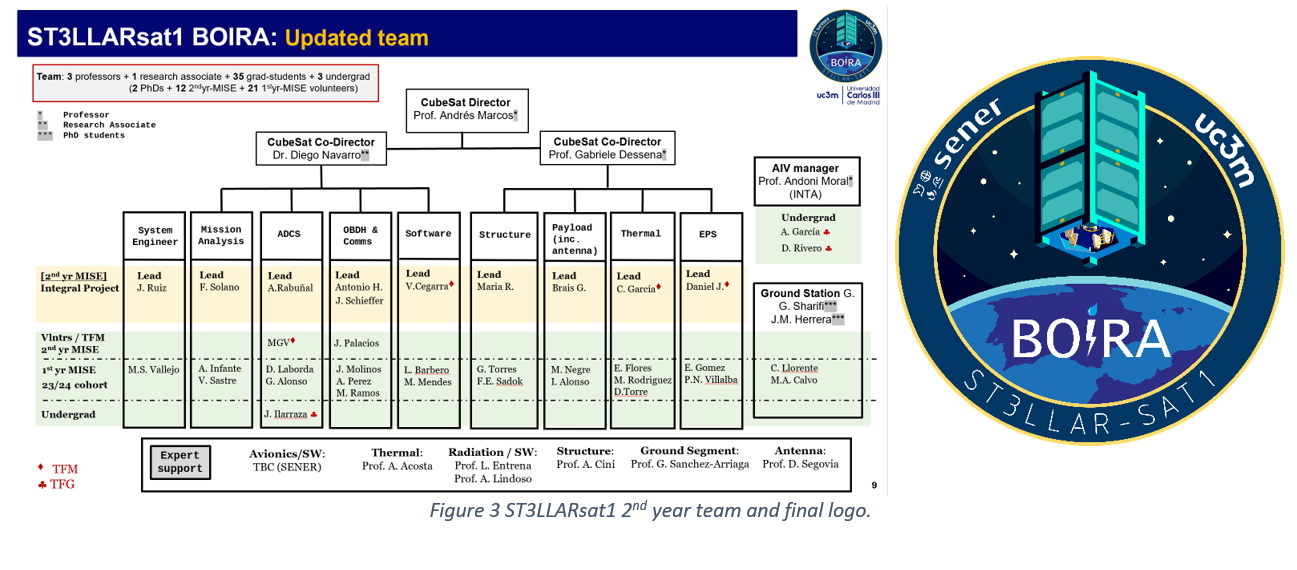UC3M ST3LLARsat1 “Boira” update: we have been in ‘quiet’ mode for the past 6 months, but not in ‘stand-by’
29 NovFrom BDR to FDR: mid-point
Back in March, we successfully submitted our BDR report to ESA and after an intense period in April/May of collocation videoconferences with different ESA experts we set about addressing their RIDs in the second phase of ESA FYS! Design Booster Program with the aim to submit our final design at FDR in March’24.
We have consolidated quite a few analyses and changed some initial design decisions based on feedback from ESA and our friends at INTA and UC3M (thanks especially to profs. Almudena Lindoso & Luis Entrena, Andrea Cini, Antonio Acosta, Gonzalo Sánchez-Arriaga, and Daniel Segovia for helping out whenever we have questions respectively about radiation/software, 3D printing, thermal, ground station, and antennas). Also, in September, we created an internal GitHub repository to improve our team documentation and information sharing practices, we defined new reporting processes (and new templates), and we rehashed our organizational structure still favoring students’ responsibility but expanding the directing academic team for more efficient (and distributed) support and management.
For the next couple of months, our aim is to start procurement, consolidate analyses and start preliminary AIVT.
Summer visits to Japan
Our director, prof. Andrés Marcos, was busy during the Summer disseminating our ST3LLAR activities, those of the aerospace department and UC3M, and presenting his research throughout Japan. It was a successful, but tiresome, trip and now we hope to keep the contact and develop students/staff exchange agreements with our new Japanese friends.
Prof. Marcos would like to thank prof. Hiroaki Mukaidani (Hiroshima university, 20th June), prof. Masayuki Sato (Kumamoto University, 21st-22nd June), profs. Mengu Cho and Tetsuhito Fuse (Kyushu Institute of Technology – KYUTECH, 23rd June), prof. Takashi Shimomura (Osaka Metropolitan University, 26th June), and JAXA’s CALLISTO project manager Shinji Ishimoto (JAXA-Chofu, 7th July) for their invitations and welcome.
See some of the pictures of their CubeSat facilities (top-left, prof. Shimomura and students in their TVAC testing room), their Engineering Qualification Models (top-right, KYUTECH amazing record of EQMs), JAXA headquarter in Chofu-Tokyo (bottom-left, especially honored and touched that JAXA decided to fly the Spanish flag next to Japan’s during our visit), and some of our sushi and sake celebrations (bottom-right, with prof. Sato and Dr. Takayuki Hirose from JAMSS).

Our students at ESA training weeks
During this year we are happy to report that five of our MISE students were selected to attend ESA Academy’s training weeks covering: Space Weather (Andrés Rabuñal, 8th-12th May), AIV (Carlos García, 5th-9th June), Space Debris (Jaime Ruiz and Diego Tirado, 4th-8th September) and Satellite Communications (Eugenio Vladik Cegarra, 28th Nov-1st Dec).
We thank ESA for these opportunities to our students, which we are already putting into practice at ST3LLAR (Andrés is the student team lead for ADCS, Carlos for Thermal, Vladik for Software, and Jaime is our student System Engineer). See some pictures of them hard working (but having lots of fun as they reported to us) during their ESA hands-on training.

New incorporations & final badge
In August and September, we welcomed respectively our two new ST3LLARsat1 codirectors Dr. Diego Navarro-Tapia and prof. Gabriele Dessena. Dr. Navarro-Tapia comes from industry and is well-known for his contributions during his PhD with our director to VEGA’s launcher thrust vector control (TVC). His undergraduate and master’s background was telecommunications, which will come handy for our onboard data handling & communications (OBDH&C) subsystem. Prof. Dessena obtained his PhD from Cranfield this year where he built and operated a hardware-in-the-loop (HIL) high-aspect ratio wing model to perform structural system identification and vibrational testing. Thus, he will be codirecting the structural (STR) and payload (PAY) subsystems, along with the thermal (THRM) and power (EPS) ones.
We really needed to expand and consolidate the academic leadership team as word of mouth among our MISE students meant a very successful participation for our 2nd year. Currently, we have 10 second year MISE students registered in the Integral Project course (the main team-design course structuring the development of ST3LLARsat1) plus 26 undergraduate and MISE volunteers. In addition, we have 2 PhD students (Ghasem Sharifi and Juan María Herrera), who are focused on the Ground Station development, but are also major help respectively in ADCS and the payload. See the organizational chart on the left of the figure.
Finally, some of our more creative student members decided and submitted an updated badge for our ST3LLARsat1 “Boira” mission, which of course has now become our official logo – see right of the figure.

ST3LLARsat is financially supported by the UC3M-SENER aerospace chair ST3LLAR and the aerospace department. Currently, it is participated by 35 MISE graduate students and led by Prof. Andrés Marcos (Beatriz Galindo Senior Distinguished Researcher) supported by Dr. Diego Navarro-Tapia (codirector of MA, ADCS, OBDH&C and SW teams), prof. Gabriele Dessena (codirector of STR, PAY, THRM and EPS) and Dr. Andoni Moral (INTA, AIV manager of ST3LLAR).
